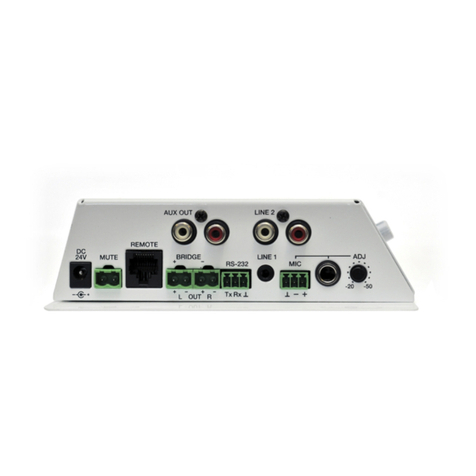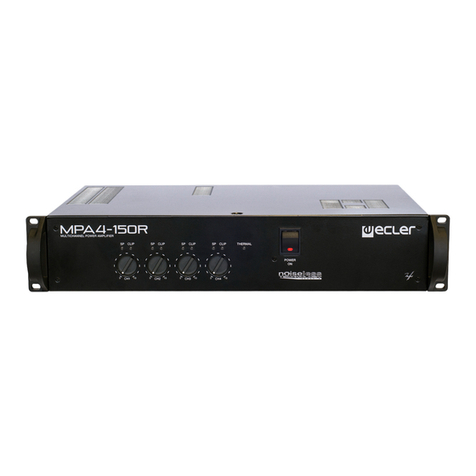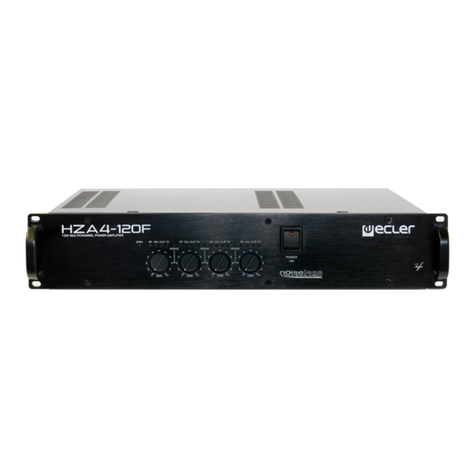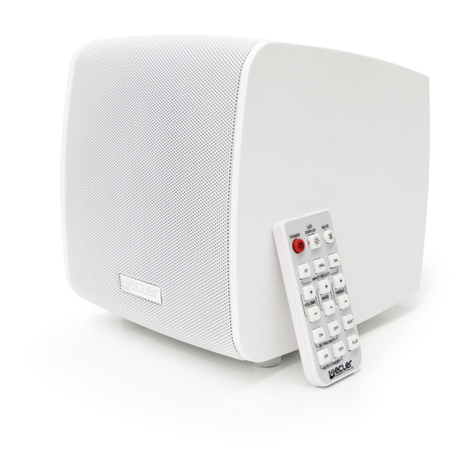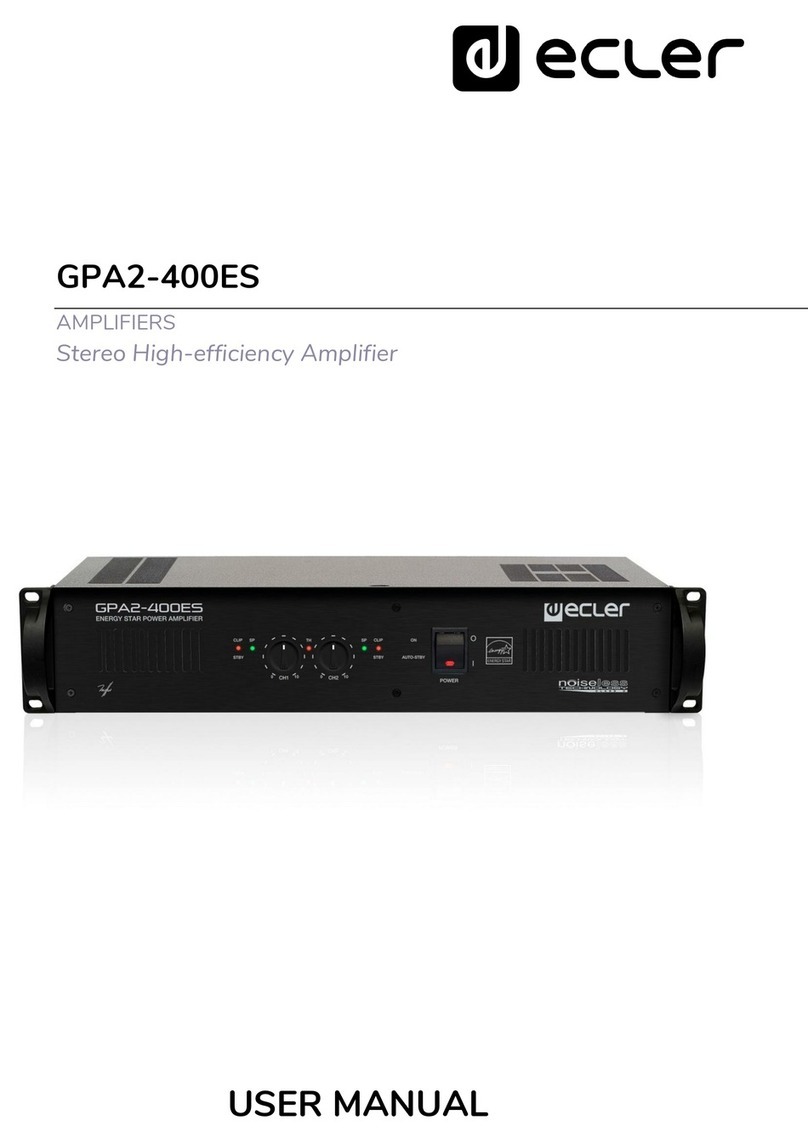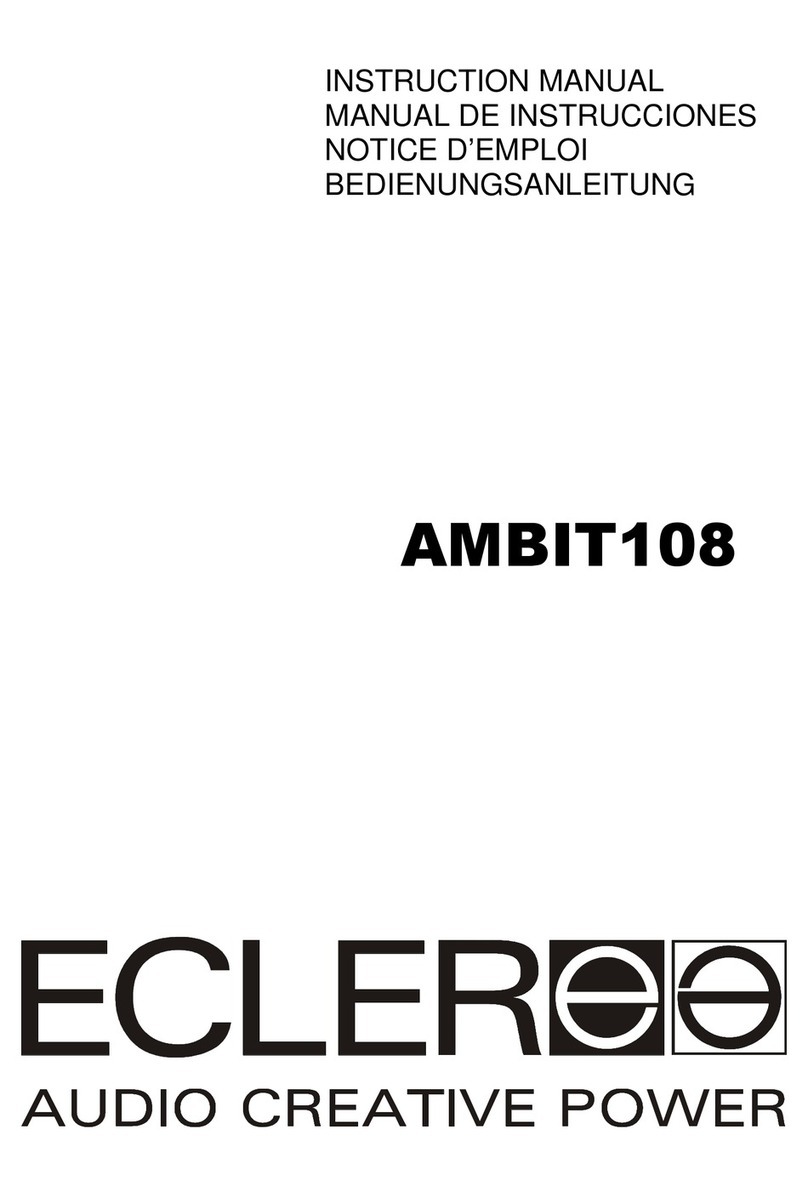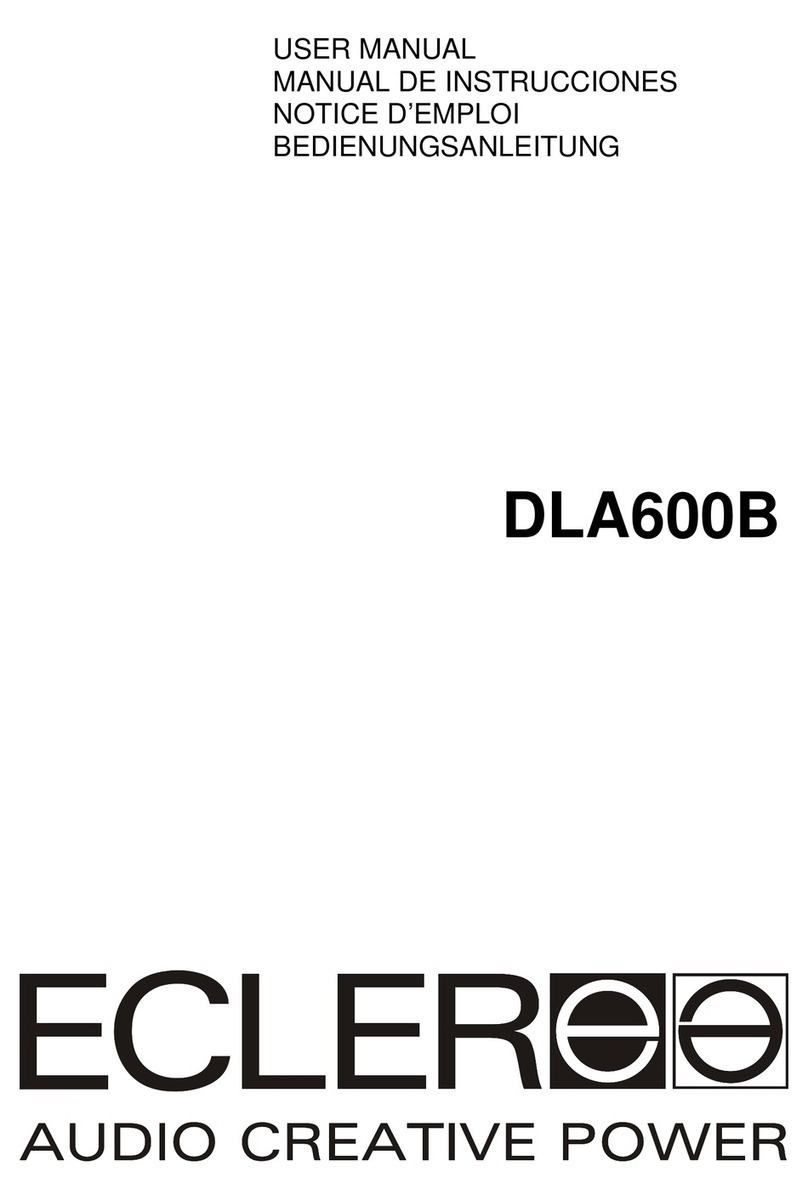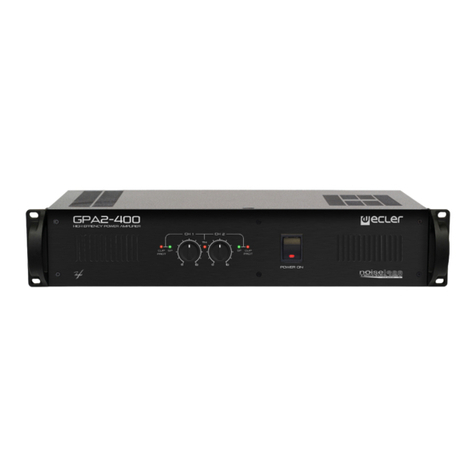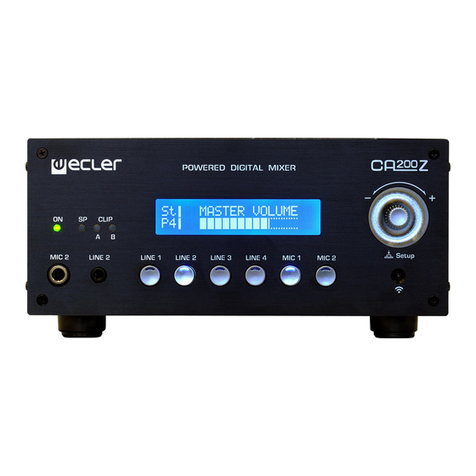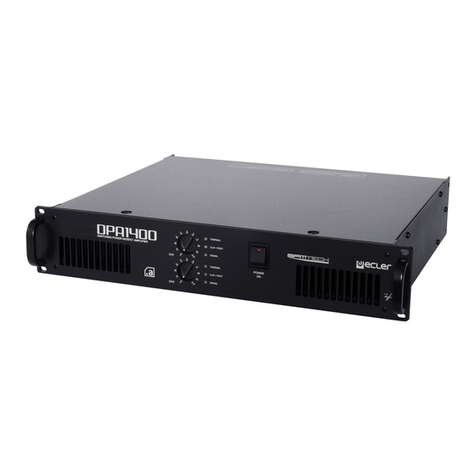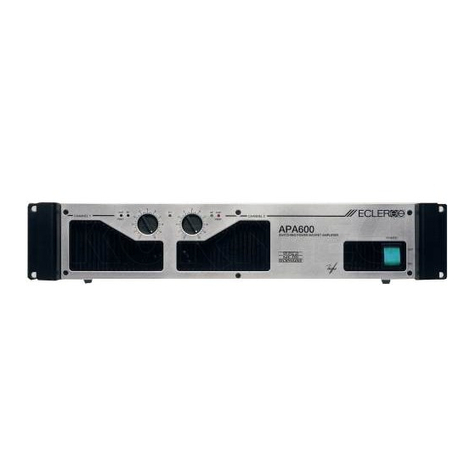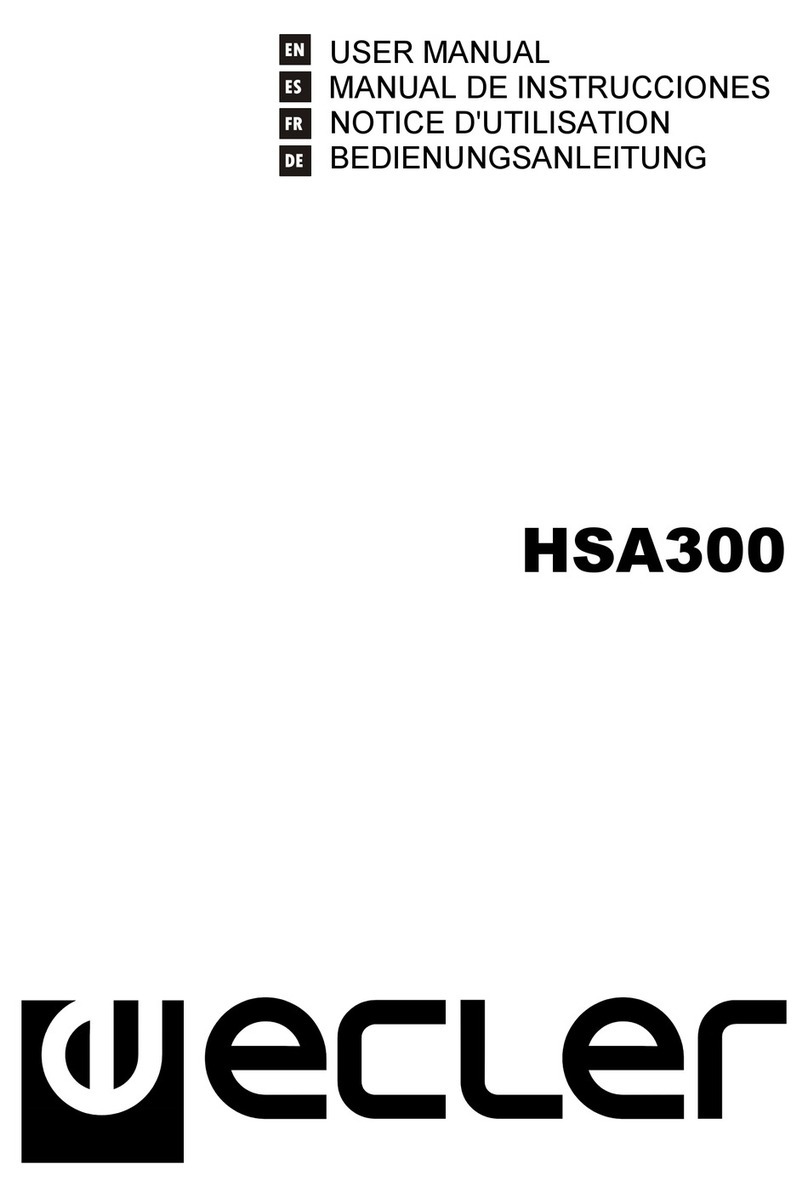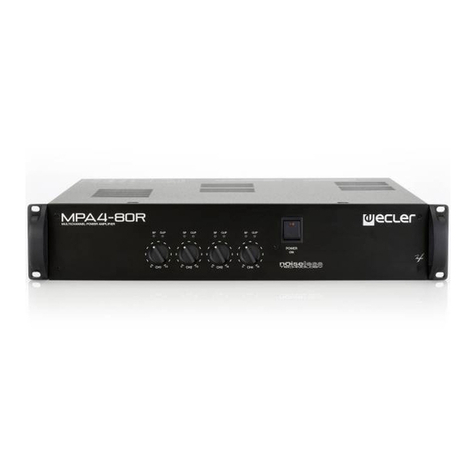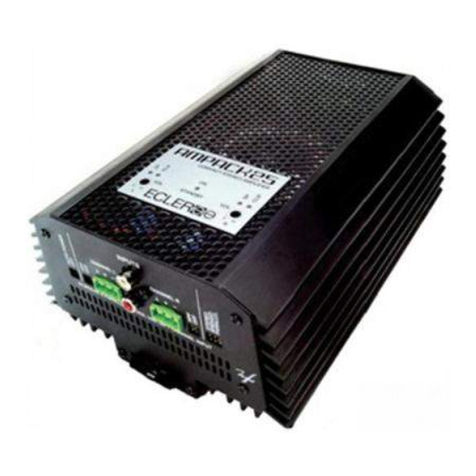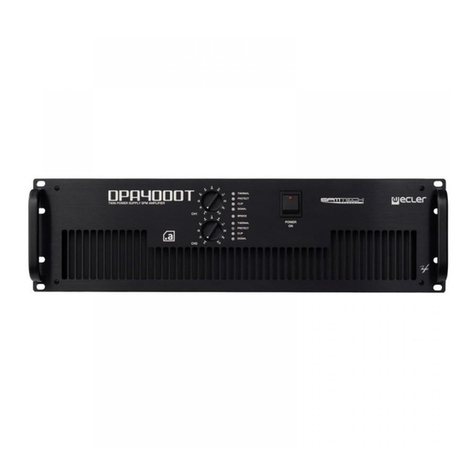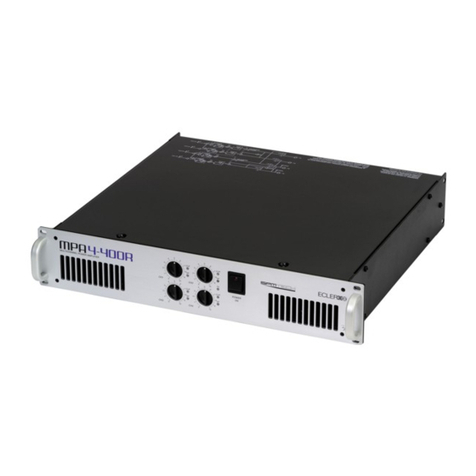
6
3. INSTALLATION
The PKUB is a professional mixer specially designed to be operated by non-technical users
and for tabletop usage. For this reason, its adjustments for microphone input sensitivity and tone
controls on each input are located on the back panel, and tone controls are adjustable with a
screwdriver only, therefore preventing the risk of unwanted operations.
Keep the unit far from noise sources (variable voltage regulators, motors, etc…) as well as
from power cables.
Also, you must not block ventilation opening with obstacles that could interfere with the
airflow of the equipment convection cooling.
The PKUB operates under voltages from 90 to 264 V at 47 to 63 Hz. This device features
an over dimensioned power supply that adapts to the mains voltage in any country of the world with
no need to make any adjustments.
In order to protect the unit from eventual overloads, the PKUB is protected by a timered
power fuse (25) of 4A. If it gets blown up, you must replace it with an identical one. NEVER REPLACE
THE FUSE WITH ANOTHER ONE WITH A HIGHER VALUE.
CAUTION: Fuse substitutions have to be performed by a qualified technician.
4. INPUTS
The PKUB INPUT 1 accepts two types of signal: MIC and stereo LINE. You can select one of
them with the back panel switch (14). On the back panel, a sensitivity knob and a MIC jack connector
handle microphone signals (level range: – 20 dBV to – 50 dBV) whereas stereo line signals are
connected to LINE RCA connectors, also located on the back panel.
INPUT 2 only accepts stereo line signals and has a front mini-jack connector and another
RCA type connector on the back panel.
MIC input allows balanced connection. In this case, the stereo 1/4" jack wiring has to be done
as indicated:
Live or direct signal > Tip
Cold or inverted signal > Ring
Ground/Earth > Sleeve
Microphones must be low impedance (200 to 600Ω) and monophonic. For NON balanced
connections, use monophonic jacks. It is also possible to make a non balanced connection with a
stereo jack connector by shorcircuiting the center ring to ground.
It supplies phantom power in order to use condenser microphones (positive on the tip and the
ring, negative on the sleeve). An internal jumper is used to switch it on/off. See configuration diagram
for more details.
